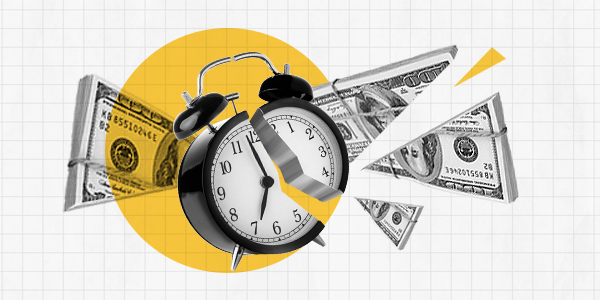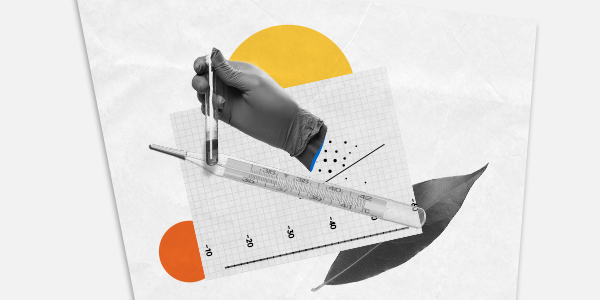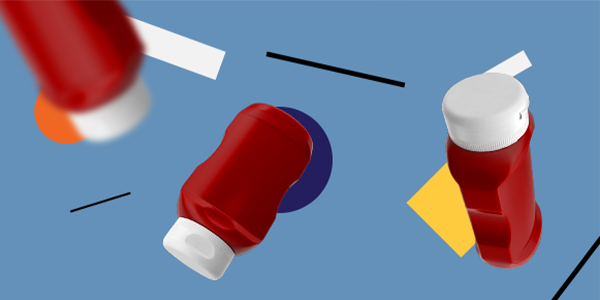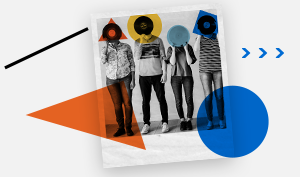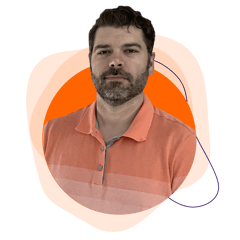
Bruce is an experienced Innovation Lead with experience in chemical production, oil & gas, pulp & paper, and automation. He is widely recognized for leadership skills in process innovation, operational effectiveness, workplace safety and environmental stewardship. He is a champion for utilizing technology to enhance workforce effectiveness in an Industry 4.0 world. Bruce has a bachelor’s degree in Chemical Engineering from Texas A&M University-Kingsville.
In this conversation, Kelly and Bruce discuss why Georgia Pacific is integrating a behavioral science approach with AI to address issues in worker safety, and why they think that is critical for future success.
Listen to the podcast here
KEY TAKEAWAYS ON…
LEADERSHIP AND ADAPTING TO INDUSTRY 4.0
Kelly Peters: It's very interesting to hear your journey from a wide-eyed child, learning about the distillation process, to a young adult, where you start to do that at scale in the field. Then eventually moving into a role that is less about physics and chemistry and more about human behavior.
You've talked about how you needed to start to answer questions around efficiency, but you immediately started talking about the relationship between efficiency and safety. And all of this is around human behavior. And now, your mandate includes AI and the next phase of the industrial revolution.
Bruce Ainsworth: Early on in my supervision, part of the motivation to become a supervisor in the plant was because I wanted to tell the people to do what I wanted them to do, because as an engineer, I was seeing these opportunities to, let's improve, do this. It takes working with the people to realize if you want the plant to run better, you have to get everybody on board with running the plant better. You can't just tell people what to do, nobody wants to live that way.
 As we think about the Industrial Revolution, and the demographic change we're seeing in North America, it's becoming more and more critical to lead people differently. We have a different group of people than what was there 20 years ago. Connecting people to how they make a difference, demonstrating how you value their input, really moves to the forefront. Benefits and accolades have taken a backseat to this new generation, the newer generations are interested in making a difference in the world.
As we think about the Industrial Revolution, and the demographic change we're seeing in North America, it's becoming more and more critical to lead people differently. We have a different group of people than what was there 20 years ago. Connecting people to how they make a difference, demonstrating how you value their input, really moves to the forefront. Benefits and accolades have taken a backseat to this new generation, the newer generations are interested in making a difference in the world.
The census data is showing us more and more people are moving to urban areas. Paper mills and chemical plants are typically not in urban areas. And so, how do you work with the people that are in those areas? How do you attract people to those areas? And then how can you work with less people? That's really the big space that my
Addressing the demographic shift was a big motivation for GP to move into Industry 4.0. The paper industry has been around for a long time. These mills and plants have had a steady stream of people with third and fourth generation people like me—their whole families have worked in these plants. People are moving to bigger cities and getting out of heavy industries.group’s working in, is how are we dealing with this demographic shift inside our company? Because in 10 years, our company is going to be an entirely different group of people.
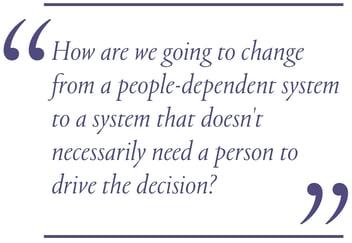 So how are we going to capture that lost knowledge? How are we going to change from a people-dependent system to a system that doesn't necessarily need a person to drive the decision? That's where we think using AI can help, by using information directly from the equipment and putting that into a system where it doesn't need as many humans to make those decisions.
So how are we going to capture that lost knowledge? How are we going to change from a people-dependent system to a system that doesn't necessarily need a person to drive the decision? That's where we think using AI can help, by using information directly from the equipment and putting that into a system where it doesn't need as many humans to make those decisions.
THE INTERSECTION OF BE AND AI
Kelly Peters: One of the things that we've talked a lot about in the course of our work together is that the increasing reliance that you must have on technology and AI, brings us to a point where the need for psychology is perhaps more important than ever.
It's not just a matter of augmenting decision making through computer-based or data-driven systems, but being able to incorporate behavioral science. It's been very exciting for me to have these conversations with you, do this work with you, where we bring in the behavioral sciences. I'd love to hear your point of view on that journey.
Bruce Ainsworth: For me personally, the journey started with Moneyball, and watching the movie, which inspired me to read the book. That was eight years ago, and I was trying to connect people to the value of data. That was the start of the journey, because it talked about what it took to make a change and break the old paradigms.
The way I see innovation is that it is not necessarily about finding cool technologies, it's more about seeing what cool things other people are doing, and figuring out how you can do the same thing in a totally different space with a totally different group of people. To me, that's the definition of innovation. Looking at what the Oakland A's were doing with data, and getting into smashing the old paradigms was something that we were really trying hard to implement in a chemical plant.
At the same time, my GP team, before I joined, was looking at eye tracking. They were trying to understand how to implement this new cool tool in improving safety. Eye tracking isn't quite ready for the type of use we are interested in, but the concept of attention was really intriguing to us. That's how we came across your team.
At the same time GP has been embracing the HOP (Human Organization Performance) philosophy—that humans are going to make mistakes, so you need to look at what your system is doing to overcome those mistakes. You are helping to put science behind that philosophy. We believe that is going to go a long way, because once you start putting science to a philosophy then you can put math to it. And once you put math, then you can do engineering. And we're a company of engineers, and we always want to go back to being engineers.
Kelly Peters: One of the other things that we've talked about is Moneyball, and how that is a revolutionary set of insights, not just for baseball, but for the boardroom. That is, using data to challenge the heuristics and rules that we built through our intuition, through legends, through myth.
In some cases we are looking at very complex patterns that it takes a computer, and the math to, to surface that into, put in our face, then show us we are wrong. Moneyball is so powerful, and disruptive, because of that. But it's not everything. If the data that's going in is biased, or it’s limited, or if the interpretation of that data is bringing bias to the table, then there's only so far that these systems can go.
So as we employ these systems, we need to make sure that we're not introducing bias into the machine, we're not reading noise out of the machine. And it's very important, if we're going to have “thinking and feeling” AI (metaphorically speaking), then we need to have experts in the science of thinking and feeling in the design and in the development of these machines, and of course, their implementation and adoption.
Bruce Ainsworth: We look at AI, and in two forms. There's the popular AI of today: that's using huge data sets and to answer a question. But if the data starts dramatically changing, or you need to ask a different question, you have to go through that whole process over.
We don't have a whole lot of data that's older than two years old. And we're not in an industry where we can collect a big data set quick. We have 35 paper mills, and that’s it. It takes a while to make a big data set. So we started looking for AI that didn't necessarily need a large data set. We've found an approach that's using natural language processing, and cognitive layers to interpret words, and to start learning the way people learn. I'm not saying it's anything like a person, it's just using words to build algorithms. And so from those domains and learning that corpus, we're able to ask any question inside that domain, because it has all of that knowledge.
If we're thinking we're going to teach a machine the way we teach a three-year-old to read, and we're thinking that the machine will be able to answer questions like a four-year-old because it's been reading since it was three. We probably should get people who know how three-year-olds and four-year-olds think so that we can make sure we're being good parents, so to speak to it. Getting you guys to help us think through how we set up these databases, and how do we ask the question the right way has been a novel idea in the AI space.
Get in touch with us today at info@BEworks.com and find out how we can get you started on your own journey to making an impact.





